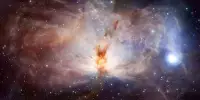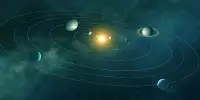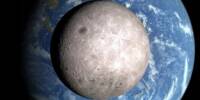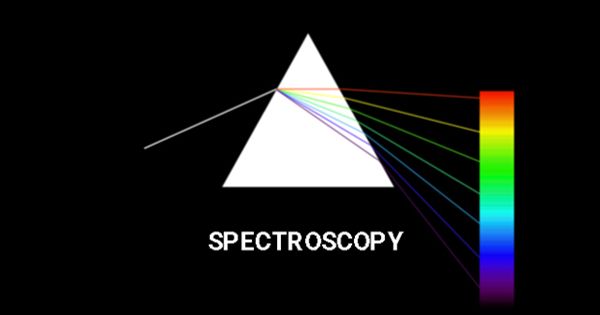Astronomers have captured images of a periodic rocky near-Sun comet breaking apart using a fleet of world-class telescopes on the ground and in space. This is the first time such a comet has been observed disintegrating, which may help explain the scarcity of such near-Sun comets.
The Solar System is a dangerous place. Figures of celestial bodies orbiting the Sun in orderly orbits can be found in textbooks. However, if an object’s orbit does not fit this pattern, gravitational effects from other objects destabilize the orbit. One common fate for such ejected bodies is to become comets in near-Sun orbits, where they will eventually collide with the Sun. Because these comets pass so close to the Sun, they are difficult to see and study. Most were discovered by chance during solar telescope observations. Even with this difficulty in mind, there are far fewer near-Sun comets than expected, indicating that something is destroying them before they can make their fatal final dive into the Sun.
To better understand these comets, a group of astronomers from Macau, the United States, Germany, Taiwan, and Canada used multiple telescopes to observe an elusive near-Sun comet called 323P/SOHO, including the Subaru Telescope, the Canada France Hawaii Telescope (CFHT), the Gemini North telescope, Lowell’s Discovery Telescope, and the Hubble Space Telescope. The orbit of 323P/SOHO was poorly constrained, so the group didn’t know exactly where to look for it, but the Subaru Telescope’s wide field of view allowed them to “cast a wide net” and find the comet as it approached the Sun.
We work very closely with our University of Hawaii users, including David Tholen and Man-to Hui, to optimize their observations, quickly following up on observations made at other facilities, and using MEGACam to recover interesting objects like 323P/SOHO.
Todd Burdullis
This was the first time 323P/SOHO was captured by a ground-based telescope. With this data, the researchers were able to better constrain the orbit, they knew where to point the other telescopes and were waiting when 323P/SOHO started to move away from the Sun again.
The researchers were surprised to discover that 323P/SOHO had changed dramatically during its close encounter with the Sun. 323P/SOHO was only a dot in Subaru Telescope data, but it had a long comet tail of ejected dust in follow-up data. The researchers believe that the intense radiation from the Sun caused parts of the comet to break off due to thermal fracturing, similar to how ice cubes crack when you pour a hot drink over them. This mass loss mechanism could help explain what happens to near-Sun comets and why there are so few of them left.
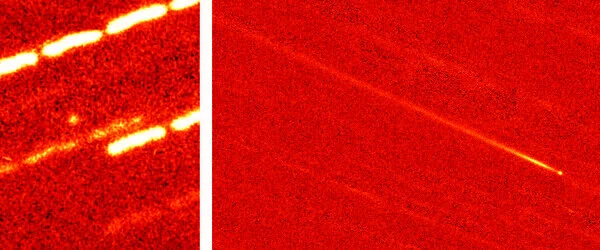
But the team’s results raised more questions than they answered. They found that 323P/SOHO rotates rapidly, taking just more than half an hour per revolution, and that its color is unlike anything else in the Solar System. Observations of other near-Sun comets are needed to see if they also share these traits.
“We couldn’t have made this discovery without observations from the telescopes on Maunakea, which the University of Hawai’i made possible.” Man-To Hui, who was a researcher at the University of Hawai’i at the time of the observations and is now an assistant professor at Macau University of Science and Technology, says “The Subaru Telescope observations were the catalyst, reducing orbit uncertainties and allowing for follow-up observations. The best coverage data came from CFHT, and the densest data points came from Gemini.”
These objects are difficult to detect and study because they pass so close to the molten core of the Solar System. The majority were discovered by chance during solar telescope observations. The group didn’t know where to look because the orbit was poorly constrained, according to Hui. However, the Subaru’s wide field of view allowed them to “cast a wide net” and find the comet as it approached the Sun. When the comet began to move away from the Sun, researchers were able to reposition other telescopes using new data.
“We work very closely with our University of Hawaii users, including David Tholen and Man-to Hui, to optimize their observations, quickly following up on observations made at other facilities, and using MEGACam to recover interesting objects like 323P/SOHO,” said Todd Burdullis, CFHT Queued Service Observing operations specialist. “Collaborating with UH astronomers to study the building blocks of our solar system yields incredible discoveries every time.”

